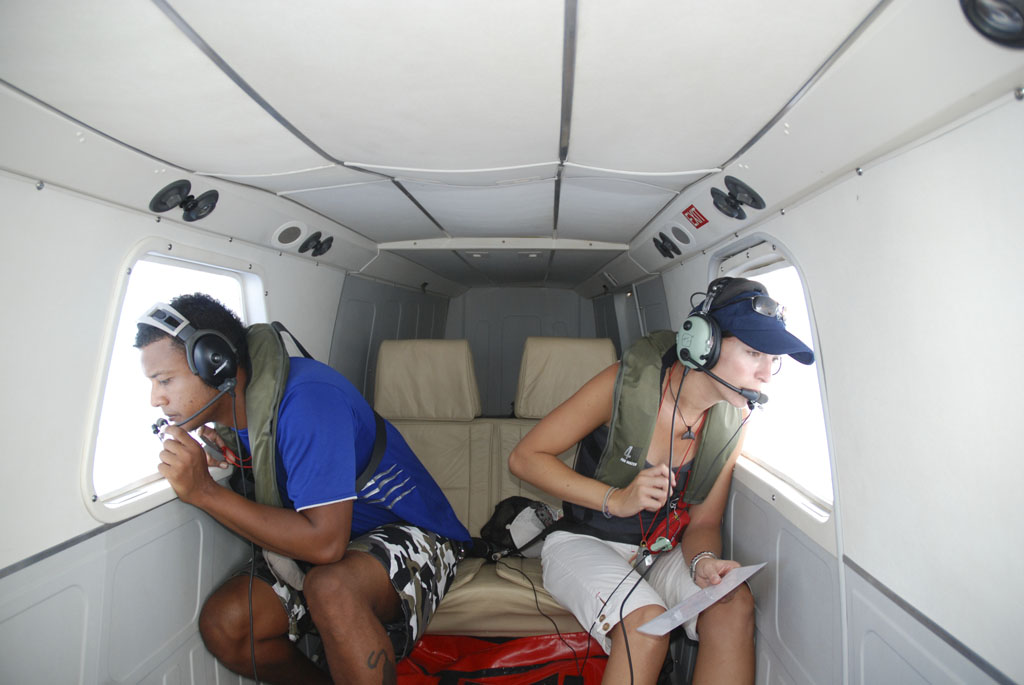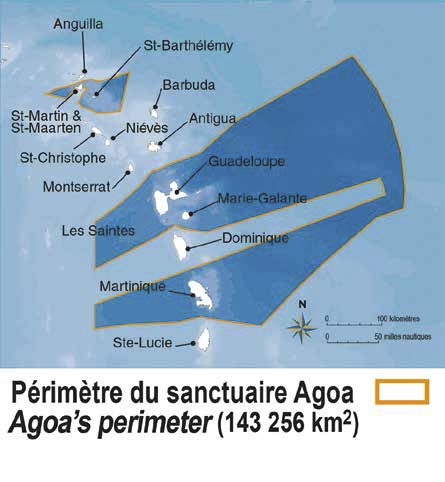The REMMOA program - whose initials represent the French for «census of marine mammals and other pelagic species by aerial observation»- was launched in the Antilles in 2008, by the Agency for Protected Marine Areas. It continued in 2016 for a six-weeks, between August and October. The goal of this national program is to improve knowledge about certain species, such as marine mammals and birds, rays, sharks, and marine turtles, in order to reinforce their protection. Following the end of the first phase of the project, in which data was collected, the second phase will take place in the various marine zones covered by REMMOA - Martinique, Dominique, Guadeloupe, Saint Barth, Saint Martin, Sint Maarten, Saba, Statia - and comprises a second aerial reconnaissance. The comparison between the results of these two phases will allow for an estimation of the evolution of the populations of these different species and provide useful information on the quality of the marine milieu. This second phase began in the French Antilles, whose exclusive economic zone covers 143,256 square kilometers. The program also provides an idea of the distribution of human activities at sea - maritime traffic, pollution, fishing, etc - that might represent potential threats toward the pelagic species in the same zone. This campaign marks the first concrete technical and scientific exchanges with the Yarari Mammal And Shark Sanctuary (see inset) recently created by The Netherlands for the Dutch Caribbean, as well as with Dominica.
Following the French example, The Netherlands have just created Yarari, a sanctuary for marine mammals — and sharks — in the territorial waters of Saba and Bonaire. Like Agoa, Yarari is an Amerindian word that can be translated as “haven of peace” or a “place of well-being.” In reality, a detailed set of regulations defines the protection of these marine animals as related to diverse domains, such as maritime transport, motorboat races, and the outlawing of shark fishing. The Agoa sanctuary was extremely happy about the news, as the creation of this new sanctuary increases the already existing network of protected marine areas dedicated to the protection of marine mammals. They look forward to joint projects and collaboration with the new sanctuary.


















